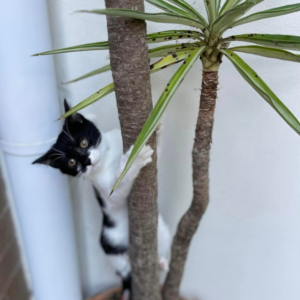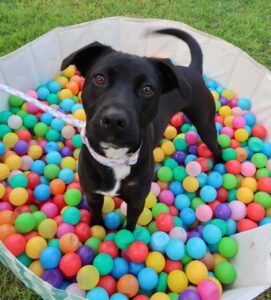 When it comes to the health and safety of our furry friends, pet owners go to great lengths to provide a safe and loving environment. However, many common household and garden plants can pose serious threats to pets. Understanding which plants are toxic is crucial to keeping our pets healthy. Here’s a guide to some of the most common toxic plants that could be lurking in your home or yard.
When it comes to the health and safety of our furry friends, pet owners go to great lengths to provide a safe and loving environment. However, many common household and garden plants can pose serious threats to pets. Understanding which plants are toxic is crucial to keeping our pets healthy. Here’s a guide to some of the most common toxic plants that could be lurking in your home or yard.
1. Lilies
Toxic to: Cats
Symptoms: Kidney failure, vomiting, lethargy, loss of appetite
Lilies are beautiful and fragrant, but they are highly toxic to cats. Even small amounts of pollen or water from a vase containing lilies can cause severe kidney damage and can be fatal.
2. Sago Palm
Toxic to: Dogs and cats
Symptoms: Vomiting, diarrhea, liver failure, seizures, death
Sago palms are popular ornamental plants, but all parts of the plant, especially the seeds, contain cycasin, a toxin that can cause severe liver damage.
3. Tulips and Hyacinths
Toxic to: Dogs and cats
Symptoms: Drooling, vomiting, diarrhea, central nervous system depression, respiratory issues
The bulbs of tulips and hyacinths contain toxins that can irritate the mouth and esophagus. Ingesting large amounts can lead to more serious problems.
4. Oleander
Toxic to: Dogs and cats
Symptoms: Severe vomiting, decreased heart rate, cardiac arrest, death
Oleander is highly toxic to pets and humans alike. The plant contains cardiac glycosides that can cause serious heart issues.
5. Azaleas and Rhododendrons
Toxic to: Dogs and cats
Symptoms: Vomiting, drooling, diarrhea, weakness, heart failure
Azaleas and rhododendrons contain grayanotoxins, which can disrupt the normal function of the heart and nervous system.
6. Dieffenbachia (Dumb Cane)
Toxic to: Dogs and cats
Symptoms: Oral irritation, drooling, vomiting, difficulty swallowing
Dieffenbachia is a common houseplant that can cause intense oral irritation and swelling of the tongue, mouth, and throat if ingested.
7. Autumn Crocus
Toxic to: Dogs and cats
Symptoms: Severe gastrointestinal distress, liver and kidney damage, respiratory failure, death
Autumn crocus contains colchicine, a substance that is extremely toxic and can cause multiple organ failure.
8. Philodendron
Toxic to: Dogs and cats
Symptoms: Oral irritation, drooling, vomiting, difficulty swallowing
Philodendron plants contain calcium oxalate crystals that can cause significant oral irritation and swelling if ingested.
9. English Ivy
Toxic to: Dogs and cats
Symptoms: Vomiting, abdominal pain, hypersalivation, diarrhea
English ivy is a popular climbing plant that can cause gastrointestinal issues and discomfort if consumed by pets.
10. Aloe Vera
Toxic to: Dogs and cats
Symptoms: Vomiting, diarrhea, lethargy, tremors
While aloe vera is known for its healing properties in humans, it contains saponins and anthraquinones that can be harmful to pets if ingested.
What to Do if Your Pet Ingests a Toxic Plant
If you suspect your pet has ingested a toxic plant, it’s important to act quickly:
- Remove any plant material from your pet’s mouth.
- Rinse their mouth with water to remove any remaining plant material.
- Contact your veterinarian immediately.
- If possible, identify the plant they ingested.
Safe Alternatives
Fortunately, there are many pet-safe plants you can choose for your home and garden, such as:
- Spider plants
- Boston ferns
- Areca palms
- Basil
- Rosemary
As much as we love to decorate our homes and gardens with beautiful plants, it’s important to be aware of those that can be harmful to our pets. By choosing pet-safe plants and keeping toxic ones out of reach, we can ensure that our furry friends remain healthy and happy. Always consult with your veterinarian if you have any concerns about plant toxicity and your pets.




 MON-SUN:
MON-SUN:
 02 9587 9611
02 9587 9611 INFO@SYDNEYDOGSANDCATSHOME.ORG
INFO@SYDNEYDOGSANDCATSHOME.ORG








Recent Comments